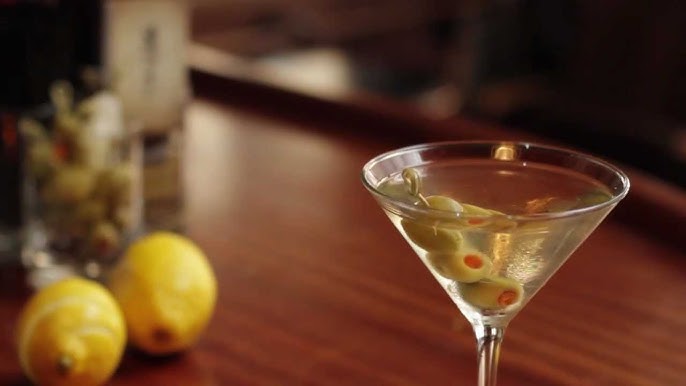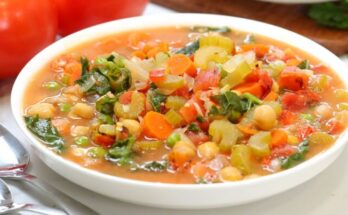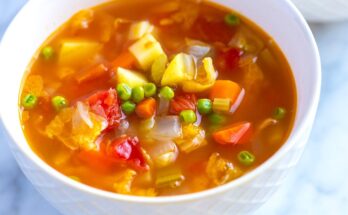Martini Recipe: The martini is the epitome of sophistication—a cocktail that’s been enjoyed by everyone from James Bond to modern-day connoisseurs.
Whether you like it smooth and classic or with a briny twist, mastering a martini is a skill every cocktail enthusiast should acquire.
In this guide, we’ll walk you through the steps of making a perfect martini at home, covering everything from ingredients to garnishing tips. Ready to impress your guests? Let’s dive in.
What is a Martini?
At its core, a martini is a simple cocktail consisting of just a spirit (gin or vodka) and vermouth. Despite its simplicity, this drink has evolved into a symbol of class and elegance. You’ll typically find two popular versions—one made with gin (the original) and the other with vodka. Each has its own fanbase, and both are delicious in their own right.
Tools You’ll Need to Make a Martini
Before we get into the recipe, gather the following tools to ensure a smooth experience:
- Cocktail shaker or a mixing glass
- Bar spoon for stirring
- Strainer to pour without the ice
- Martini glass, preferably chilled
These tools help ensure your martini is cold, smooth, and perfectly balanced.
Classic Martini Ingredients
You’ll need just a few ingredients:
- Gin or vodka (2.5 oz)
- Dry vermouth (0.5 oz)
- Ice
- Garnish: an olive or lemon twist
Using high-quality spirits and fresh garnishes will elevate your drink significantly.
Step-by-Step Guide: How to Make a Classic Martini
Step 1: Chill the Glass
Place your martini glass in the freezer for about 10 minutes, or fill it with ice water while you prepare the drink. This keeps the martini cold from the first sip.
Step 2: Add Ice to the Mixing Glass or Shaker
Fill your mixing glass or shaker halfway with ice. The ice not only chills the ingredients but also dilutes the drink slightly for better balance.
Step 3: Measure and Pour the Gin or Vodka
Add 2.5 ounces of gin or vodka to the mixing glass. Use a jigger for precise measurements.
Step 4: Add Dry Vermouth
Pour in 0.5 ounces of dry vermouth. If you prefer a lighter vermouth flavor, you can reduce the amount or even just coat the inside of the mixing glass with vermouth.
Step 5: Stir (or Shake) Thoroughly
Stir the drink for about 30 seconds if you’re going for a smoother, classic martini. If you prefer it shaken, give it a vigorous shake for 10-15 seconds.
Step 6: Strain into the Chilled Glass
Use a strainer to pour the martini into the pre-chilled glass.
The Dirty Martini Variation
A dirty martini introduces olive brine into the mix, adding a savory note to the cocktail. The amount of brine used can vary depending on how “dirty” you like it. This variation is perfect for those who enjoy a saltier kick.
How to Make a Dirty Martini: Step-by-Step Instructions
- Prepare the glass by chilling it.
- Add ice to your mixing glass.
- Pour 2.5 ounces of vodka or gin and 0.5 ounces of dry vermouth.
- Add 0.5 – 1 ounce of olive brine (adjust to taste).
- Stir or shake the mixture until cold.
- Strain into the glass and garnish with 2-3 olives.
Shaken vs. Stirred: What’s the Difference?
Shaking a martini dilutes it more and introduces tiny ice shards, creating a frothy texture. Stirring, on the other hand, results in a silkier and more transparent drink. It’s all about preference—James Bond may prefer his shaken, but traditionalists often go for stirred.
Choosing Between Gin and Vodka for Your Martini
- Gin Martini: Herbal and botanical flavors
- Vodka Martini: Smooth and neutral taste
Both work beautifully, but if you’re new to martinis, start with vodka for a milder introduction.
How to Garnish a Martini Properly
- Olive: Perfect for a classic or dirty martini
- Lemon Twist: Adds a citrusy aroma
To create a twist, peel a thin strip of lemon and run it along the glass rim before dropping it in.
Tips for Crafting the Perfect Martini at Home
- Use top-quality ingredients.
- Don’t skip chilling the glass—it makes a huge difference.
- Adjust vermouth and brine to suit your personal taste.
Martini Pairings: Foods That Go Well with Martinis
Salty foods complement martinis beautifully. Consider serving:
- Olives and nuts
- Cheese platters
- Smoked salmon
Martini Variations to Try
- Espresso Martini: Vodka, espresso, and coffee liqueur
- Vesper Martini: Gin, vodka, and Lillet Blanc
- French Martini: Vodka, pineapple juice, and raspberry liqueur
FAQs about Martini Recipe
1. What are the basic ingredients for a classic Martini?
A classic Martini typically consists of gin and dry vermouth. The ratio of gin to vermouth can vary depending on personal preference, but a common formula is 6 parts gin to 1 part vermouth. Garnishes usually include an olive or a lemon twist.
2. Can I make a Martini with vodka instead of gin?
Yes, absolutely! A Vodka Martini, or “Vodkatini,” uses vodka in place of gin for a smoother, slightly different flavor profile. The preparation method remains the same, with vodka and dry vermouth stirred over ice, then strained into a chilled glass.
3. What is the difference between a dry Martini and a wet Martini?
The difference lies in the amount of vermouth used. A dry Martini has less vermouth, typically a ratio of 6:1 or even 10:1 gin to vermouth, resulting in a stronger gin flavor. A wet Martini contains more vermouth, with ratios like 3:1, which highlights the vermouth’s flavor alongside the gin.
4. Should a Martini be shaken or stirred?
James Bond prefers his “shaken, not stirred,” but traditionally, a Martini is stirred. Stirring gently combines the vermouth and gin without aerating the mix, leading to a clearer and smoother drink. Shaking can dilute and slightly cloud the drink, but some prefer it for the slightly different texture.
5. What kind of glass should I use for a Martini?
Martinis are best served in a stemmed Martini glass, often referred to as a cocktail glass. The design of the glass, with its wide, shallow bowl, helps maintain the drink’s temperature and displays the clarity of the cocktail.
6. How can I customize my Martini?
Customizations can include changing the garnish, adjusting the gin-to-vermouth ratio, or adding bitters or flavored syrups. Popular variations include the Dirty Martini, which includes a bit of olive brine, or the Gibson, which swaps the olive for a cocktail onion.
Conclusion
Mastering the art of making the perfect martini is more than just mixing spirits; it’s a creative journey. Every martini enthusiast knows that this iconic cocktail offers a canvas for personal expression. Whether you prefer the dry zest of a classic gin martini or the smooth allure of a vodka base, the key is in the balance of ingredients.
We encourage you to experiment with different vermouths, adjust your ratios, and even explore garnishes that add a personal touch to your glass. From a twist of lemon to a few olives, each element you choose can transform the flavor profile in exciting ways.
Remember, the best martini is the one that perfectly suits your taste. So, shake or stir your way through various recipes and find your personal favorite. Embrace the process and let each sip reflect your unique palate. Cheers to your martini mastery!
References
For further reading and validation of the information provided in this Martini Recipe with Post Links, it is essential to consult reputable sources. Reliable cocktail recipe websites, culinary experts, and professional mixologists can offer additional insights and variations on the classic martini. A few trusted sources include:
- Food Network for expert cocktail recipes and techniques
- Liquor.com for industry-standard cocktail guidelines
- Serious Eats for in-depth articles and recipes on mixology
These resources will enhance your understanding and help you perfect your martini-making skills.



